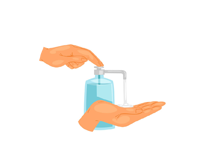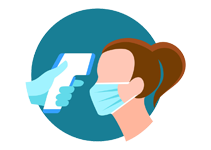Regorafenib
Uses of Regorafenib
- Used to treat metastatic colorectal cancer (CRC) after previous treatments have failed
- Indicated for gastrointestinal stromal tumors (GISTs) when surgery is not an option
- Prescribed for hepatocellular carcinoma (liver cancer) in patients who have previously been treated
- May be used for other cancers as prescribed by a doctor
How Regorafenib Works
Regorafenib works by inhibiting several kinases, enzymes that are involved in cancer cell growth, angiogenesis (the development of new blood vessels that feed tumors), and tumor progression. By blocking these pathways, Regorafenib helps to reduce the growth of cancer cells and slows the spread of the tumor. It primarily targets the vascular endothelial growth factor receptor (VEGFR), platelet-derived growth factor receptor (PDGFR), and other tyrosine kinases involved in tumor growth.
Benefits of Regorafenib
- Effective in treating metastatic colorectal cancer when other treatments have failed
- Helps manage gastrointestinal stromal tumors (GISTs) that cannot be surgically removed
- Can slow the progression of liver cancer in patients who have already been treated with other therapies
- May improve overall survival rates in certain cancer patients
How to Take Regorafenib
Regorafenib is typically taken orally in the form of tablets. The usual dose is 160 mg once a day, taken with food. It is recommended to take the medication at the same time each day, preferably with a low-fat meal. The treatment regimen often follows a cycle of 3 weeks on treatment and 1 week off. However, your healthcare provider will determine the specific dosage and treatment schedule based on your condition and response to the drug. Do not exceed the prescribed dose and follow your doctor `s instructions closely.
Type of Dosage Available
- Tablets
Side Effects of Regorafenib
- Common side effects include fatigue, diarrhea, and skin rashes
- May cause high blood pressure and liver problems
- Can lead to hand-foot syndrome (painful redness or swelling of hands and feet)
- Other potential side effects include nausea, vomiting, and loss of appetite
- In rare cases, Regorafenib can cause serious liver damage or bleeding problems
Safety Advice
- Before starting Regorafenib, inform your doctor if you have a history of liver problems, heart disease, or bleeding disorders.
- Regular monitoring of liver function and blood pressure is essential during treatment.
- Drink plenty of fluids to stay hydrated, especially if you experience diarrhea.
- If you experience severe side effects like severe diarrhea, bleeding, or unexplained bruising, contact your healthcare provider immediately.
Frequently Asked Questions (FAQs)
Q: What is Regorafenib used for?
A: Regorafenib is used to treat metastatic colorectal cancer, gastrointestinal stromal tumors (GISTs), and liver cancer when other treatments have not been effective.
Q: How does Regorafenib work?
A: Regorafenib works by blocking certain enzymes and proteins involved in tumor growth, helping to slow the progression of cancer and improve survival in some patients.
Q: What are the common side effects of Regorafenib?
A: Common side effects include fatigue, skin rashes, diarrhea, and hand-foot syndrome. Serious side effects can include liver damage and bleeding, which require immediate medical attention.
Q: How should I take Regorafenib?
A: Regorafenib should be taken once daily with food. Your doctor will determine the correct dosage and treatment schedule, which typically involves 3 weeks on treatment and 1 week off.
Q: Where can I buy Regorafenib?
A: Regorafenib can be purchased from Zeelab Pharmacy at the best price. Always consult with your doctor before starting this medication to ensure it`s right for you.
Medicine Not Available for Regorafenib
Uses of Regorafenib
- Used to treat metastatic colorectal cancer (CRC) after previous treatments have failed
- Indicated for gastrointestinal stromal tumors (GISTs) when surgery is not an option
- Prescribed for hepatocellular carcinoma (liver cancer) in patients who have previously been treated
- May be used for other cancers as prescribed by a doctor
How Regorafenib Works
Regorafenib works by inhibiting several kinases, enzymes that are involved in cancer cell growth, angiogenesis (the development of new blood vessels that feed tumors), and tumor progression. By blocking these pathways, Regorafenib helps to reduce the growth of cancer cells and slows the spread of the tumor. It primarily targets the vascular endothelial growth factor receptor (VEGFR), platelet-derived growth factor receptor (PDGFR), and other tyrosine kinases involved in tumor growth.
Benefits of Regorafenib
- Effective in treating metastatic colorectal cancer when other treatments have failed
- Helps manage gastrointestinal stromal tumors (GISTs) that cannot be surgically removed
- Can slow the progression of liver cancer in patients who have already been treated with other therapies
- May improve overall survival rates in certain cancer patients
How to Take Regorafenib
Regorafenib is typically taken orally in the form of tablets. The usual dose is 160 mg once a day, taken with food. It is recommended to take the medication at the same time each day, preferably with a low-fat meal. The treatment regimen often follows a cycle of 3 weeks on treatment and 1 week off. However, your healthcare provider will determine the specific dosage and treatment schedule based on your condition and response to the drug. Do not exceed the prescribed dose and follow your doctor `s instructions closely.
Type of Dosage Available
- Tablets
Side Effects of Regorafenib
- Common side effects include fatigue, diarrhea, and skin rashes
- May cause high blood pressure and liver problems
- Can lead to hand-foot syndrome (painful redness or swelling of hands and feet)
- Other potential side effects include nausea, vomiting, and loss of appetite
- In rare cases, Regorafenib can cause serious liver damage or bleeding problems
Safety Advice
- Before starting Regorafenib, inform your doctor if you have a history of liver problems, heart disease, or bleeding disorders.
- Regular monitoring of liver function and blood pressure is essential during treatment.
- Drink plenty of fluids to stay hydrated, especially if you experience diarrhea.
- If you experience severe side effects like severe diarrhea, bleeding, or unexplained bruising, contact your healthcare provider immediately.
Frequently Asked Questions (FAQs)
Q: What is Regorafenib used for?
A: Regorafenib is used to treat metastatic colorectal cancer, gastrointestinal stromal tumors (GISTs), and liver cancer when other treatments have not been effective.
Q: How does Regorafenib work?
A: Regorafenib works by blocking certain enzymes and proteins involved in tumor growth, helping to slow the progression of cancer and improve survival in some patients.
Q: What are the common side effects of Regorafenib?
A: Common side effects include fatigue, skin rashes, diarrhea, and hand-foot syndrome. Serious side effects can include liver damage and bleeding, which require immediate medical attention.
Q: How should I take Regorafenib?
A: Regorafenib should be taken once daily with food. Your doctor will determine the correct dosage and treatment schedule, which typically involves 3 weeks on treatment and 1 week off.
Q: Where can I buy Regorafenib?
A: Regorafenib can be purchased from Zeelab Pharmacy at the best price. Always consult with your doctor before starting this medication to ensure it`s right for you.
Download India's most affordable pharmacy app
- Compare with medicine prices
- Save upto 90% on your medicine bills

Temperature Controlled storage and delivery

Regular Sanitization

Disinfected Packaging









 Added!
Added!